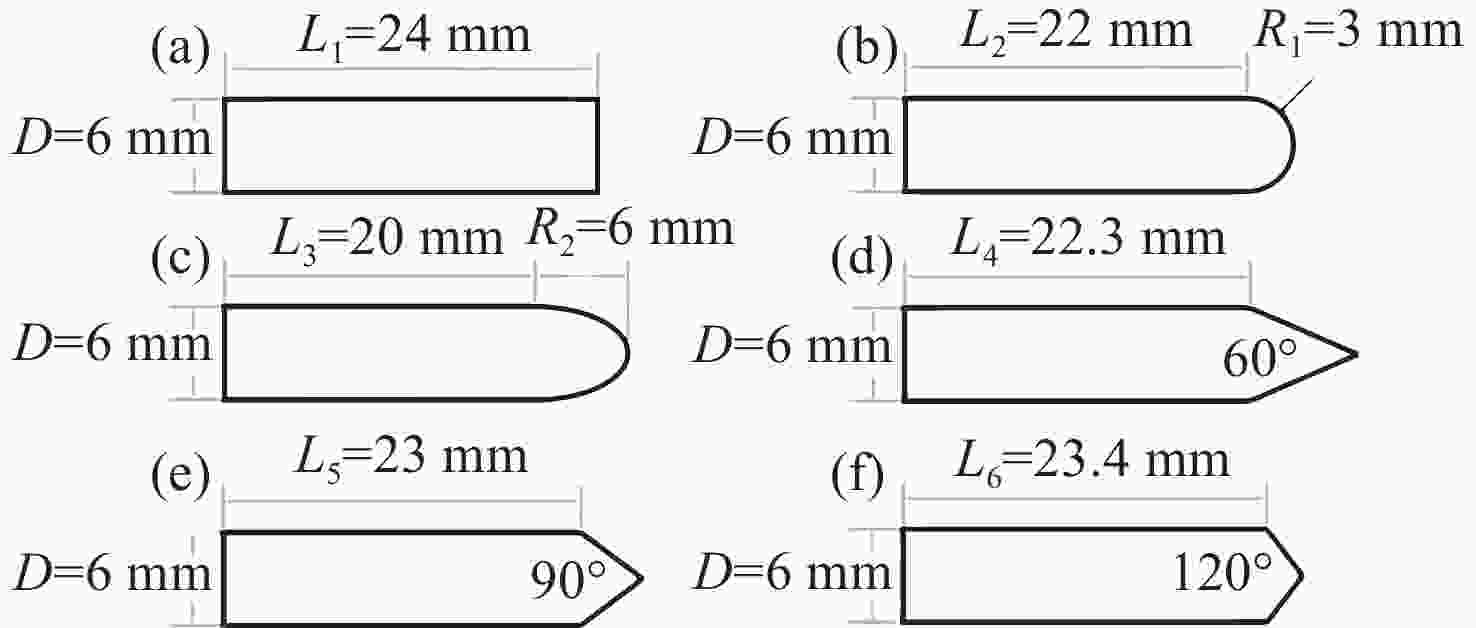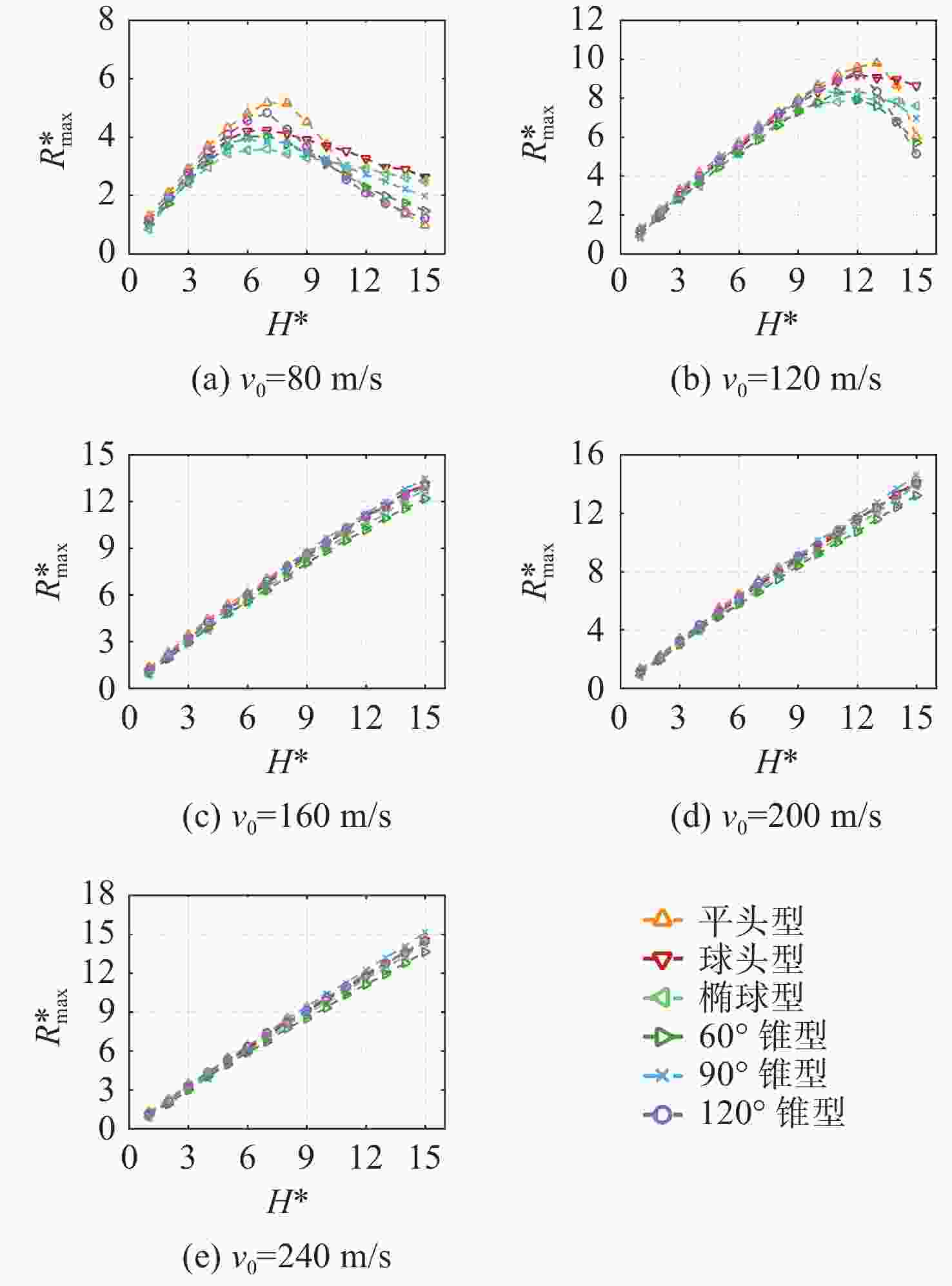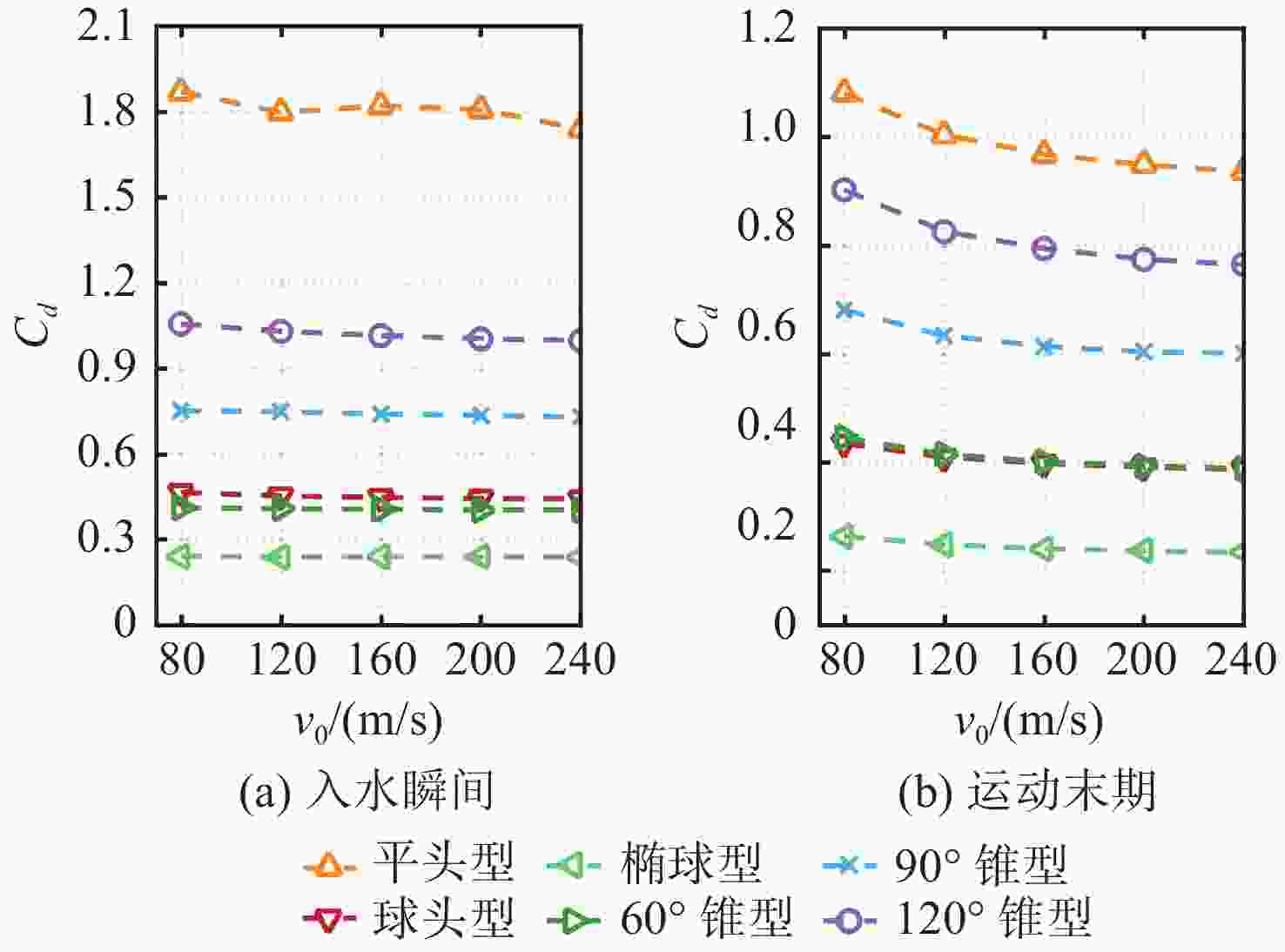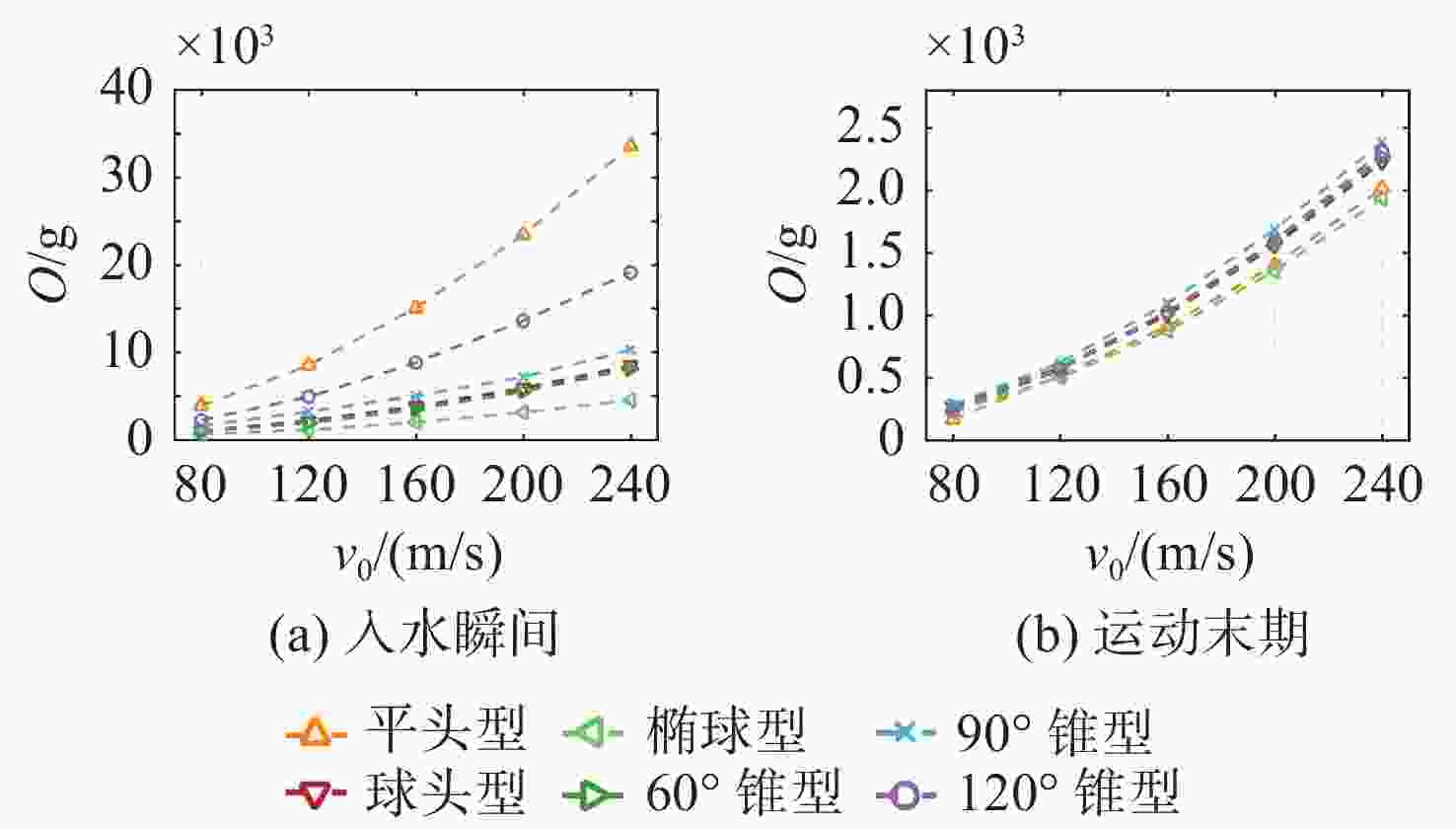Comparison of High-Speed Water Entry Movement Process of Axisymmetric Bodies with Different Head Shapes
-
摘要: 跨介质回转体高速入水是一个瞬态流动过程, 涉及到回转体与气相和液相的复杂多相流动。文中基于雷诺时均方程, 并考虑自然空化现象的多相流模型, 建立了入水空泡动力学数值模型, 并研究了不同头型回转体垂直入水过程运动特性和流体动力的影响规律。通过数值仿真结果与相关文献试验结果对比, 验证了模型和数值方法的有效性。结果表明, 不同头型回转体入水后的空泡特征与运动速度规律有很大的差异, 相应瞬态阻力系数也表现出很大差异; 在空泡闭合前, 体现出明显的回射流效应, 并影响空泡形态与回转体阻力的变化; 回转体的入水速度对空泡尺寸和冲击载荷具有非常直接的影响, 入水速度较低时回转体速度衰减相对更快, 阻力系数相对更大。Abstract: High-speed water entry of the trans-medium axisymmetric body is an instantaneous flow process, involving the complex multiphase flow of the axisymmetric body with the gas and liquid phases. In this paper, a numerical model of cavity dynamics after water entry was established based on Reynolds-averaged Navier-Stokes equations and a multiphase flow model of natural cavitation. The movement characteristics and hydrodynamic force effects of axisymmetric bodies with different head shapes during vertical water entry were studied. The effectiveness of the model and the numerical method was verified by comparing the numerical simulation results with the experimental results in related literature. The results show that the cavity characteristics and the movement speed laws of axisymmetric bodies with different head shapes after water entry are highly different. The corresponding transient drag coefficients also show great differences. The re-entrant jet effect is evident before the cavity is closed, and it affects the cavity shape and resistance of the axisymmetric body. The water entry speed of the axisymmetric body has a direct impact on the cavity size and impact load. When the water entry speed is small, the speed of the axisymmetric body decays relatively faster, and its drag coefficient is relatively larger.
-
Key words:
- trans-medium axisymmetric body /
- water entry /
- cavity /
- multiphase flow
-
表 1 网格与时间步设置及速度误差
Table 1. Setup of grid number and time step, and velocitgy errors
序号 网格数 内层网格
尺寸/mm时间步长
/10−7s误差
/%1 66万 0.05 1.18 0.20 2 46万 0.07 1.65 1.00 3 32万 0.10 2.36 4.00 4 22万 0.14 3.30 8.50 5 15万 0.20 4.72 13.80 -
[1] 王聪, 许海雨, 卢佳兴. 跨介质航行器入水多相流场及运动特性研究现状与展望[J]. 水下无人系统学报, 2023, 31(1): 38-49. doi: 10.11993/j.issn.2096-3920.2022-0082Wang Cong, Xu Haiyu, Lu Jiaxing. Status and prospects of investigation into multiphase flow field and motion characteristics of trans-medium vehicles during water entry[J]. Journal of Unmanned Undersea Systems, 2023, 31(1): 38-49. doi: 10.11993/j.issn.2096-3920.2022-0082 [2] Worthington A M, Cole R S. A study of splashes[M]. New York: Longmans Green and Company, 1908. [3] Bottomley G H. The impact of a model seaplane float on water: No583[R]. Washington, DC: NACA, 1919. [4] Von K T. The impact of seaplane floats during landing: NACA TN 321[R]. Washington USA: National Advisory Committee for Aeronautics, 1929: 1-8. [5] Wagner V H. Phenomena associated with impacts and sliding on liquid surfaces[J]. Z Angew Math Mech, 1932(12): 193-215. [6] Truscott T T. Cavity dynamics of water entry for spheres and ballistic projectiles[D]. Cambridge, Massachusetts, USA: Massachusetts Institute of Technology, 2009. [7] Aristoff J M, Truscott T T, Techet A H, et al. The water entry of decelerating spheres[J]. Physics of Fluids, 2010, 22(3): 70-340. [8] Truscott T T, Beal D N, Techet A H. Shallow angle water entry of ballistic projectiles[C]//Proceedings of the 7th International Symposium on Cavitation PREPRINT. Ann Arbor, Michigan, USA: [s. n.], 2009. [9] Gong K, Lui H. Numerical simulation of circular disk entry water by an axisymmetrical SPH model in cylindrical coordinates[C]//Proceedings of the fifth international conference on fluid mechanics, Shanghai, China: Tsinghua University Press & Springer, 2007. [10] Zhang K, Yan K, Chu X S, et al. Numerical simulation of the water-entry of body based on the Lattice Boltzmann method[C]//2010’ International conference on hydrodynamics. Shanghai: ICHD, 2010. [11] Zhang K, Yan K, Chu X S, et al. Numerical simulation of constant speed water-entry cavity based on LBM[J]. Journal of Ship Mechanics, 2010, 14(10): 1129-1133. [12] 石汉成, 蒋培, 程锦房. 头部形状对水雷入水载荷及水下弹道影响的数值仿真分析[J]. 舰船科学技术, 2010, 31(10): 104-107. doi: 10.3404/j.issn.1672-7649.2010.10.027 [13] 魏英杰, 杨柳, 王聪, 等. 超弹性球体垂直入水空泡流动研究[J]. 空气动力学学报, 2020, 38(4): 780-787. doi: 10.7638/kqdlxxb-2019.0132 [14] Guo Z, Zhang W, Xiao X, et al. An investigation into horizontal water entry behaviors of projectiles with different nose shapes[J]. International Journal of Impact Engineering, 2012, 49(2): 43-60. [15] 苗圃, 祁晓斌, 王佳雯. 圆柱体高速入水数值模拟研究[J]. 舰船科学技术, 2022, 44(2): 1-5. doi: 10.3404/j.issn.1672-7649.2022.02.001 [16] 杨晓光, 党建军, 王鹏, 等. 波浪对航行体高速入水载荷特性影响[J]. 兵工学报, 2022, 43(2): 355-362. doi: 10.3969/j.issn.1000-1093.2022.02.013Yang Xiaoguang, Dang Jianjun, Wang Peng, et al. The influence of waves on the impact load during high-speed water-entry of a vehicle[J]. Acta Armamentarii, 2022, 43(2): 355-362. doi: 10.3969/j.issn.1000-1093.2022.02.013 [17] 明付仁, 王嘉捷, 刘文韬, 等. 高速跨介质入水多相流动与流固耦合特性研究综述[J]. 空气动力学学报, 2024, 42(1): 68-85. doi: 10.7638/kqdlxxb-2023.0197 [18] Yang D, Xiong Y L, Guo X F. Drag reduction of a rapid vehicle in supercavitating flow[J]. International Journal of Naval Architecture and Ocean Engineering, 2017, 9(1): 35-44 [19] 熊永亮, 郜冶, 王革. 水下超空泡航行体减阻能力的数值研究[J]. 弹道学报, 2007, 19(1): 51-54.Xiong Yongliang, Gao Ye, Wang Ge. Numerical study of drag reduction ability on supercavitation vehicle[J]. Journal of Ballistics, 2007, 19(1): 51-54. [20] Chen T, Huang W, Zhang W, et al. Experimental investigation on trajectory stability of high-speed water entry projectiles[J]. Ocean Engineering, 2019, 175: 16-24. doi: 10.1016/j.oceaneng.2019.02.021 [21] 魏海鹏, 史崇镔, 孙铁志, 等. 基于 ALE 方法的航行体高速入水缓冲降载性能数值研究[J]. 爆炸与冲击, 2021, 41(10): 112-123. [22] 汪振, 吴茂林, 孙玉松, 等. 基于多介质ALE算法的柱体高速垂直入水仿真[J]. 水下无人系统学报, 2020, 28(1): 81-88.Wang Zhen, Wu Maolin, Sun Yusong, et al. Multi-medium ale algorithm-based simulation of vertical and high-speed water entry of cylinder[J]. Journal of Unmanned Undersea Systems, 2020, 28(1): 81-88. -





 下载:
下载:
























